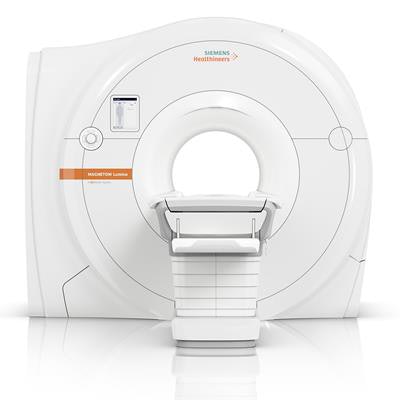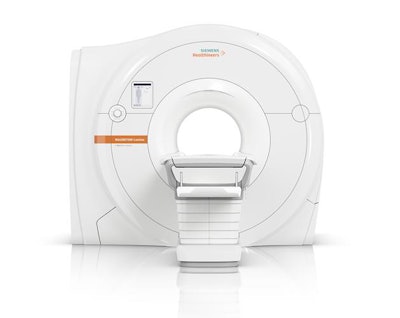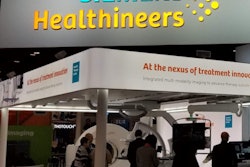
At this week's RSNA 2018 meeting, Siemens Healthineers is expanding the BioMatrix concept it launched in 2017 by introducing two new MRI scanners in the family: the Magnetom Lumina 3-tesla scanner and the Magnetom Altea 1.5-tesla system. Both bring the BioMatrix concept to more affordable price points than previous models.
First introduced in 2017, the BioMatrix concept involves the use of sensors and tuners to automatically adapt scanner protocols to patient anatomy. For example, sensors embedded in the table of a BioMatrix scanner track the patient's breathing, helping users select the optimal scan protocol, while specialized radiofrequency (RF) coils set optimal scan parameters based on patient anatomy.
 The Magnetom Lumina 3-tesla scanner. Image courtesy of Siemens.
The Magnetom Lumina 3-tesla scanner. Image courtesy of Siemens.The original BioMatrix scanners were the 3-tesla Magnetom Vida and the 1.5-tesla Magnetom Sola. With Lumina and Altea added to the family, Siemens is rolling out the concept to more cost-efficient scanners with 70-cm magnet bores, according to Andreas Schneck, vice president of marketing and sales for Siemens' global MR business.
Siemens has also developed new sequences and acceleration technologies for the systems. In addition to the company's Turbo Suite MR acceleration package, Lumina and Altea have optimized workflow designed to reduce unwanted variation in scans between patients. Users of the new systems will also have access to the company's Dot automated workflow engines.
The scanners can also be used with syngo Virtual Cockpit, a Siemens technology that enables scanners to be controlled from remote locations. This can be helpful when MRI scanners are sited at facilities that don't have skilled personnel to set up scans, Schneck said.
Meanwhile, Innovision is a new in-bore patient entertainment system that not only lets users show customized video content to patients but also includes a mirror inside the bore that gives patients the illusion of being in a larger space. Siemens also has a new solution for noise cancellation that results in quieter scans.
Finally, the new Turbo Suite Excelerate package brings simultaneous multislice imaging to turbo spin-echo sequences as well as the company's Resolve sequence, cutting orthopedic scanning by 50%, while Compressed Sensing is being expanded out of cardiac and body scanning to other clinical applications.
Lumina is available with the company's XK gradient with an amplitude of 36 mT/m and a slew rate of 200 T/m/sec, while Altea is available with an XJ gradient and a 33-mT/m amplitude and 125-T/m/sec slew rate. The field-of-view on the scanners is 55 x 55 x 50 cm for Lumina and 50 x 50 x 50 cm for Altea.
Siemens plans to begin serial shipments of Lumina and Altea in the spring of 2019 after receiving appropriate regulatory clearances; the first customer installations are going in now.
Other MRI product introductions being highlighted at RSNA 2018 are a blanket Contour coil that's available with 24 or 48 elements and a BioMatrix version of Magnetom Amira, a 60-cm scanner sold mostly in international markets. Two new BioMatrix sensors will be introduced for Magnetom Vida: one called Kinetic that's integrated into the magnet bore for motion correction and one called Beat for capturing cardiac signals. Both sensors are available not only for Vida but also for Sola, and the Beat sensor is also optionally available for the Lumina and Altea scanners.

















